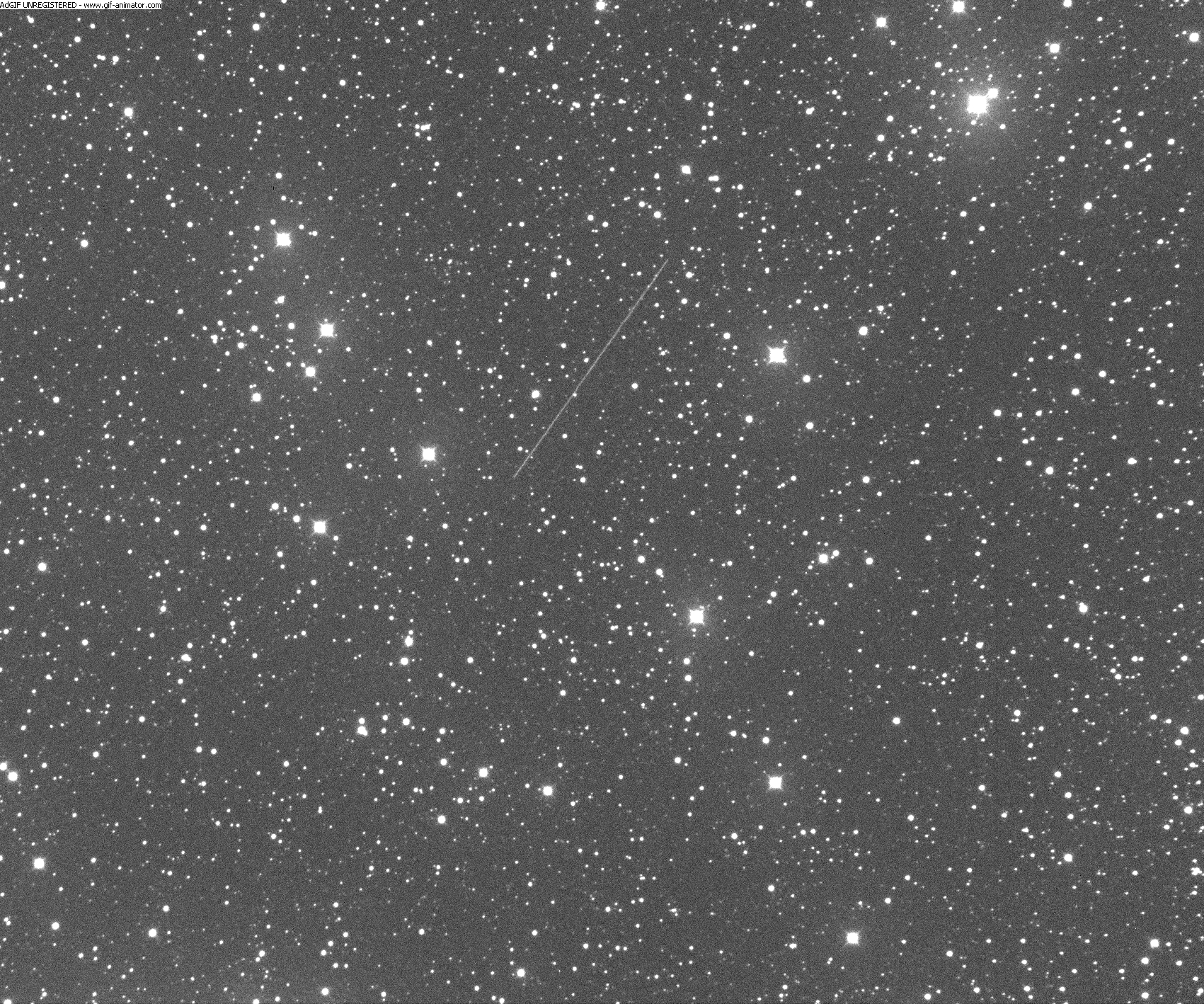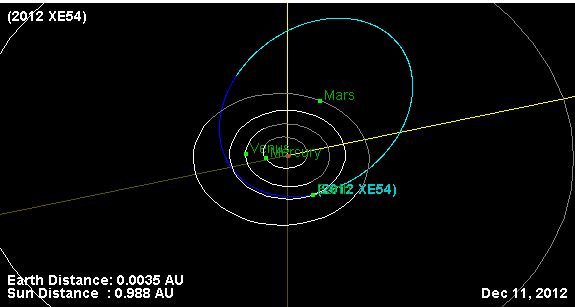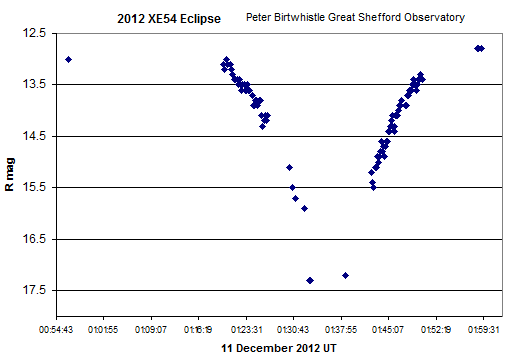Image of Asteroid 2012 XE54 taken with the the H06 ITelescope network near Mayhill, New Mexico on December 11, 2012, through a 0.25-m f/3.4 reflector + CCD. Credit: Ernesto Guido & Nick Howes, Remanzacco Observatory.
A newly discovered small asteroid named 2012 XE54 passed harmlessly by Earth early today and as predicted it was eclipsed by Earth’s shadow, causing its light to “wink out” for a short time, about 40 minutes.
Above is an image of the asteroid from Ernesto Guido and Nick Howes using a 0.25-m f/3.4 reflector + CCD with the ITelescope facility near Mayhill, New Mexico. It is a single 60-second exposure, “taken with the asteroid at magnitude ~13.2 and moving at ~630 “/min. The asteroid is trailed in the image due to its fast speed. At the moment of the close approach 2012 XE54 will move at ~ 720″/min… North is up, East is to the left,” wrote Guido and Howes on the Remanzacco Observatory website.
Below is an animation showing the movement of 2012 XE54, using three consecutive 60-second exposures. This asteroid was zipping right along at a fast pace, at a distance from Earth of about 226,000 km (141,000 miles) or about .6 lunar distances.
2012 XE54 Animation December 11, 2012, by E. Guido & N. Howes
Pasquale Tricarico of the Planetary Science Institute had predicted that the asteroid would pass through the Earth’s shadow, creating an asteroid eclipse, a rather rare event that is similar to an eclipse of the full Moon by Earth’s shadow. At 01:22 UTC on December 11 the eclipse began, and it left Earth’s shadow at 02:00 UTC. Those watching the asteroid noted that the asteroid “disappeared” from its track, and then reappeared after leaving Earth’s shadow.
“In two images taken at 01:30:16 and 01:31:18, 60sec exposure, 2012 XE54 appeared as a very faint and long track, then… nothing. In the following images there is no visible track. Wonderful!” wrote Elia Cozzi from the New Millennium Observatory, posting in the mpml asteroid research group message board.
Orbital diagram of Asteroid 2012 XE54 from JPL’s Small Body Database.
While we don’t have images to share of that event, as Guido and Howes mentioned, Peter Birtwhistle produced a lightcurve (see graph below) of the eclipse:
Tricarico wrote that the first known case of an asteroid being eclipsed by Earth’s shadow was “Asteroid 2008 TC3 which was totally eclipsed just one hour before entering Earth’s atmosphere over Sudan in 2008, and asteroid 2012 KT42 experiencing both an eclipse and a transit during the same Earth flyby in 2012.”
Guido and Howes also mentioned that their work last night was “in memory of our dear friend & colleague Giovanni Sostero.”




